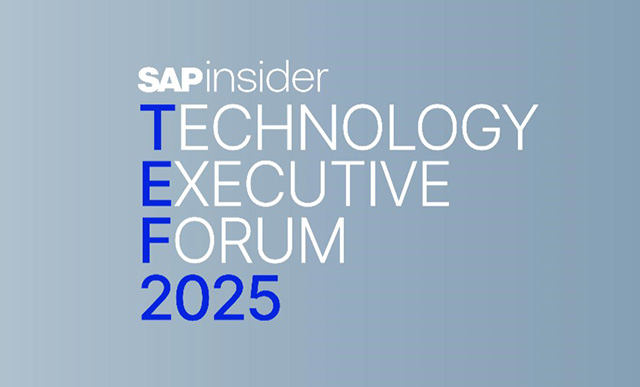Evolving Your Organization’s AI Capabilities
Your Journey Towards a "Smart Enterprise"
Meet the Experts
By Kumar Singh, Research Director, SAPinsider
AI is a critical component in helping organizations transform the way they operate, improve customer service, and offer new opportunities to their workforce. At SAPinsider, we will be publishing an AI and ML State Of the Market benchmark report for the first time in early 2022, to capture insights from SAPinsider community on this exponentially growing area. However, to harness the true potential of AI, organizations need to adopt a strategy, culture, and set of core capabilities around AI that match the organization’s maturity. As we know by now, deploying an AI-based system is very different than acquiring off-the-shelf software or developing a custom-coded non-AI solution. AI-based systems must be continuously trained, monitored, and evaluated for performance if organizations are to realize their full benefits while guarding against bias, privacy violations, and safety concerns. Neglecting this maturity assessment can seriously impede an AI project, potentially causing a rejection of the technology by employees who perceive it as too difficult to use or untrustworthy.
In order to understand what should be the next steps in your journey to build world-class AI capabilities, you need to evaluate where you are and what the next milestones look like. There are many AI framework maturity maps now available. This one is my own formulation, but you will find that the theme is generally aligned across most of the frameworks out there. My perspective of an AI maturity model consists of four stages of development:
Explore related questions
Stage 1: Freshman
Organizations at the Freshman stage are seeking to understand the varieties and applications of AI and how others in their industry are using it. They strive to make more data-driven decisions and currently tend to rely on the instincts of experienced leaders to make decisions. Freshman organizations need to invest in projects that focus on fast, iterative experimentation. Doing this successfully requires organizations to build a culture that embraces experimentation and empowers colleagues to make data-driven decisions. Organizations at this level of maturity should look to adopt AI technologies built on established platforms, helping them to grow into digital businesses.
Stage 2: Sophomore
Organizations at this level of maturity are implementing cultural changes to empower employees and make data-driven decisions. They are focused on building a data culture and using AI to build new processes and streamline operations. Having digitized assets and deployed AI to automate certain processes, these organizations are ready to explore owning custom AI solutions. Sophomore organizations are poised to embrace rapid experimentation and will invest more in understanding how to implement and improve AI over time. Investments should continue in accountability protocols for AI governance, monitoring, orchestrating, and improving AI over time, and infusing ethical viewpoints in AI-based systems.
Stage 3: Junior
Junior organizations understand that AI will be instrumental in helping them compete and transform. These organizations know that others are using AI and understand the competitive disruption this may entail. Organizations at this maturity level are focused on shifting culture to empower employees, increasing collaboration, and generating ideas for optimization, new offerings, and business models. These organizations are becoming increasingly comfortable with taking risks and are striving to transition away from fixed projects to more iterative projects.
Junior organizations can adopt configurable AI, hosted by technology companies. This abstracts away the operational complexity of maintaining the core AI while allowing organizations to infuse AI into digital experiences. At the same time, experimentation with more advanced AI technologies such as custom AI is encouraged by these organizations to learn about how to operate and coordinate more complex systems.
Stage 4: Senior
Senior organizations are AI Mature organizations that have shifted their culture to embrace rapid, iterative experimentation and a data-driven approach. Senior organizations develop AI talent and understand how to apply this resource to multiple AI initiatives simultaneously. They are not merely asking what they can do with AI but what should they be doing with it. The organizations also infuse ethical perspectives into their experience creation process. Organizations at this level of maturity should continue to evaluate toolchains for configurable and custom AI while being vigilant about monitoring, retraining, and updating AI-based systems. Maintaining AI talent, prioritizing new strategic initiatives, and continued agile experimentation are areas of focus for senior organizations.
What does this mean for SAPinsiders ?
Digital transformation is a journey. It provides a path for organizations to innovate and establish new and better ways of doing business that benefit all stakeholders. Considering and assessing an organization’s AI maturity provides a clear path to guide AI technology adoption efforts. Organizations closer to the foundational or approaching stages should look to adopt configuration-based AI-first, where the concepts of operationalization are developed by partners. When more specific AI capabilities are required, organizations should assess themselves across strategic, cultural, and capability boundaries to determine if they are ready to own and operate a custom AI solution.









